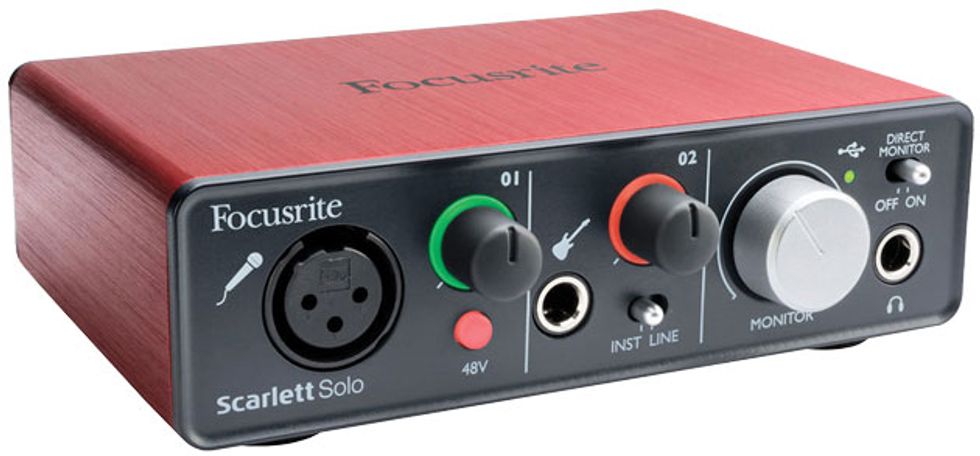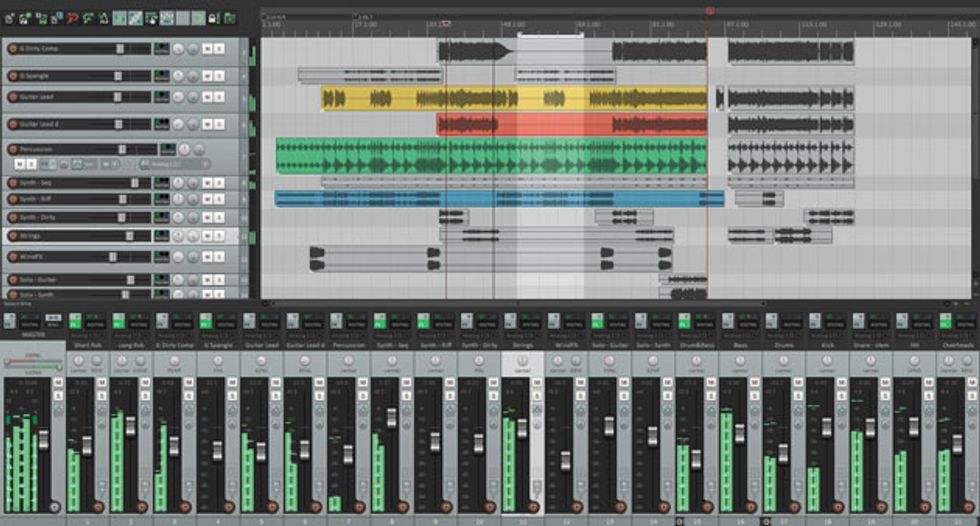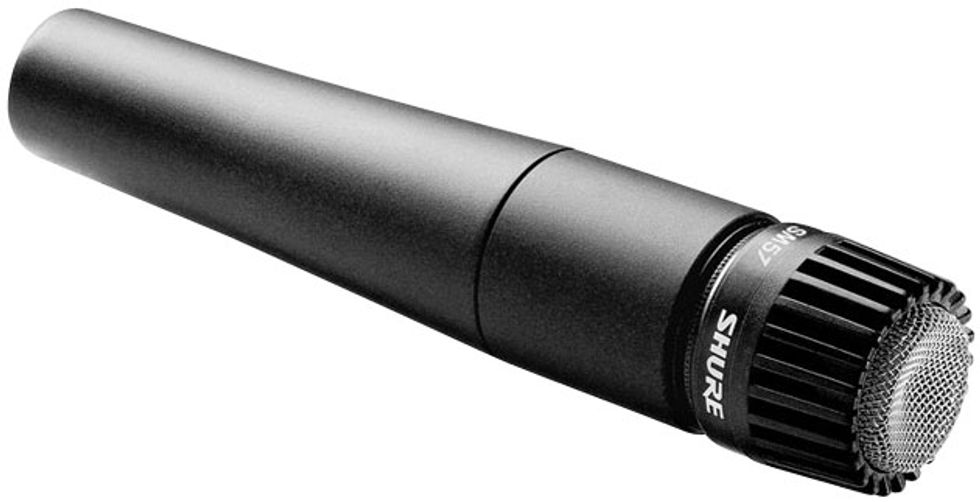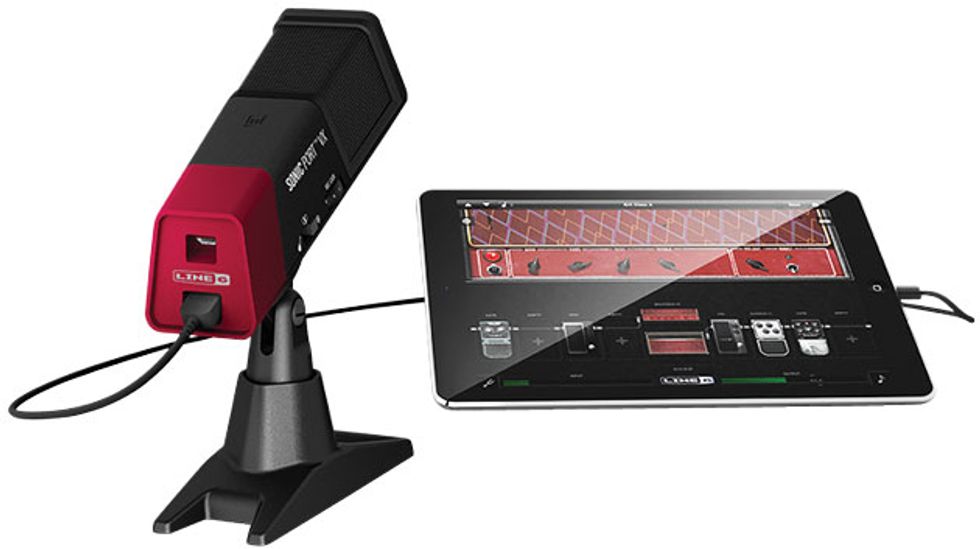Recording gear advice for total beginners.
Image 1: Like many audio interfaces in its $99 price range, Focusrite Scarlett Solo has inputs for both guitar and mic cables.
A few weeks ago my Premier Guitar pals posted a question to the mag’s Facebook page: “What topics would you like to see covered in Recording Guitarist?”
We received enough thoughtful replies to inspire many cool columns-to-be. (Thanks, guys!) But one request predominated. “I would like a primer on the very basics,” wrote Peter Neilson. “How about a real back-to-basics lesson?” agreed Matthew Zacharias Richards. “You’re sitting with just a guitar, an interface, and a computer—now what?” Kandace Quidachay Castro wanted to read about “must-haves for beginners in studio production,” and Dominique Hallberg requested “tips on affordable software and hardware for absolute beginners.”
Your command is my wish! Let’s start with a look at the hardware and software you need to record guitar at home. So let’s assume that a) you already own a guitar, amp, cable, and reasonably recent computer, tablet, or smart phone, b) you haven’t acquired much, if any, recording gear yet, and c) you want to spend as little as possible, at least until you’ve learned enough to make smart upgrade choices.
That means you’ll need to round up several things:
• a DAW (“digital audio workstation” software for recording, editing, and mixing your performances).
• an audio interface (to convert the analog sound of your guitar into digital data the computer can understand, and to convert your digital recordings back to analog so you can listen through speakers or headphones).
• something to listen though.
And if you plan to record acoustic guitar, vocals, and/or your amp (as opposed to faking an amp sound in your computer), you’ll also need a microphone, mic stand, and mic cable.
Wizard of DAWs. We live in an age of super-powered DAWs. There are many fine options: Pro Tools, Logic, Cubase, Live, Digital Performer, Studio One, FL Studio, and more. But for now, let’s focus on the least expensive choices.
Audacity is a free DAW for both Macs and PCs. It’ll get the job done, though I find it awkward to work with and it doesn’t include specialized guitar tools like amp and effect modelers (plug-ins that mimic the sound of amps and pedals, so you can record straight into your computer and get amp-like sounds without having to mic an actual amp). It’s probably wiser to start with something that provides an upgrade path to a pro-quality DAW, which you’ll want if you get deeper into recording.
Mac users are in luck: GarageBand, a cool and powerful entry-level DAW, is free. And if you ever upgrade to Apple’s flagship DAW, Logic Pro, you can transfer your GarageBand projects straight into that program. GarageBand includes amps and stompbox models and other handy guitar tools. (Disclosure: I’m a paid Logic/GarageBand developer.)
Image 2: Reaper is a powerful yet inexpensive shareware DAW that includes amp modeling.
If you’re on a PC, you’ll probably need to spend money, but not much. One great option is Cubase Elements, the light version of a leading DAW with a massive user base. (There’s also a Mac version.) Elements costs $99, and you can save a third of that if you have a student ID and purchase the program via an educational software site. If you prefer not to spend anything for now, grab Reaper, a powerful donation-ware DAW. (Reaper’s creators, Cockos, request a voluntary $60 donation if you keep using the program.) Reaper also includes amp modeling and guitar effects. (Also, light versions of leading DAWs are sometimes included with audio interface purchases.)
If you wind up with a DAW that doesn’t include amp and effect modeling, download the light/free versions of third-party amp modeling plug-ins and run them inside your DAW. These include only a fraction of the features found in the paid versions, but they can definitely get you started. Two great choices are Native Instruments’ Guitar Rig Player and IK Multimedia’s AmpliTube Custom Shop. In fact, you might want to grab those even if your DAW offers modeling, just for more options.
Appealing options for Android users include Audio Evolution Mobile Studio and FL Studio Mobile.
Image 3: Even if you eventually upgrade to fancier microphones, you’ll always find uses for the inexpensive Shure SM-57.
Interface the Music. Pro audio interfaces can cost thousands of dollars, but you can often get shockingly good results from inexpensive models. (Some computers have a mini-plug audio input jack—why not get an adapter and plug in that way? Because the convertors inside most computers sound awful for music purposes. Trust me—get an interface.)
The cheapest computer audio interfaces I’ve found are Behringer’s $29 UM2 and $39 UMC22, and the $49 Lexicon Alpha, none of which I’ve tried myself. But I can vouch for the $99 Focusrite Scarlett Solo, which sounds great and is more ruggedly built than the cheaper models. All of these allow you to record two tracks simultaneously.
To mic or not to mic? Before buying an interface, consider whether you’ll ever use a microphone to record vocals, acoustic guitar, a physical guitar amp, or anything else. (Spoiler alert: You probably will.) In that case, you need an interface that accepts microphone cables, as all the models above do. (They either have separate guitar and microphone jacks, or hybrid jacks that accommodate both.)
If you’re certain you won’t do any miking, you can also consider dedicated guitar interfaces with no mic jacks, such as the IK Multimedia iRig HD, Apogee Jam, or the Line Six Pod Studio GX. The $99 Pod Studio GX include access to the company’s popular amp and effect modeling software, as does the $149 Pod Studio UX1, which does have a mic input jack.
A third option is an interface with a built-in mic. One compelling option for tablet recordings is the $199 Line 6 Sonic Port VX. I own one, and its built-in condenser microphone (read on for an explanation of mic types) sounds excellent for the price. (You can hear it in my March 2105 Recording Guitar column.) Just one catch: While this built-in-mic format is great for working at your computer desk, it’s not so helpful for miking an amp across the room.
All these devices come with special cables to connect to you computer. They all use standard USB jacks, but if you’ve got a new-fangled Mac with a Thunderbolt jack, you might consider the $149 Resident Audio T2, one of the few entry-level interfaces to exploit this newer, faster technology.
I like mic. If you even suspect you might be interested in microphone recording, I recommend one of the interfaces with a mic input, rather than one with a built-in mic. But that means you’ll need to buy a mic.
Image 4: Created for tablet and smart phone recordings, Line 6’s Sonic Port VX includes a built-in condenser microphone.
There are three basic mic types: dynamic, condenser, and ribbon. Least expensive are dynamic models, and they’re great for recording amps and rough-edged vocals. Condensers tend to be more hi-fi and are usually the best choice for acoustic instruments and smooth vocals. Ribbon mics have a warm, smooth sound that’s awesome for guitar, but they’re expensive. (There are also mics that connect to your computer via USB, but there’s no need for them when you plug into an interface.)
If recording becomes a habit, you’ll eventually own multiple mics. But for a first purchase, I recommend the ubiquitous Shure SM-57. It costs less than $100. You’ll find many uses for it even if you acquire pricier mics. And if you hate it, it’s easy to sell. (It’s also easy to find used ones.) The 57 has a rough-and-ready sound that many producers prefer for recording amps, even if they have a locker full of $10,000 mics. It’s not perfect for acoustic instruments, but it’s not dreadful. (There are many ultra-low-cost condenser mics out there, but if you go the condenser route, I suggest saving up a few hundred bucks for something great-sounding.)
You’ll also need a mic cable and mic stand. Pro mics use a three-pronged XLR connector. (In fact, you can determine whether an interface accepts mics by whether it has a three-pronged female input jack.) A 20-foot cable costs about $15. You can get a mic stand for about the same price. (Choose a model with a boom arm, so you can record a guitar amp with its speaker near the ground.) Your mic will probably come with a clip (the hardware that attaches the mic to the stand), but if not, you can pick one up for under five bucks.
The phones you own. Unless your computer is connected to a decent sound system, you need something to listen through—those tinny-sounding built-in speakers won’t cut it. For many reasons, pro engineers prefer to record and mix over high-end speakers rather than headphones. But as you learn the ropes, you can get by with whatever headphones or ear buds you already own. If you get serious about recording, you’ll eventually upgrade to dedicated studio monitors.
If you already own a computer/tablet/smart phone, chances are you can get everything you need to record electric guitar, acoustic guitar, and vocals for about $200 if you go with an inexpensive interface and DAW. Choosing the snazziest options above might cost between $300 and $400.
What comes next? We’ll talk about actually using this stuff in upcoming columns. But don’t wait for me—crack those product manuals and see how far you can get. Finally, note that my product list is far from complete. If you’ve had great results with entry-level DAWs, interfaces, and mics that I’ve neglected to mention, please share your tips in comments. Share your problems too. I may not be able to troubleshoot your particular gear, but chances are there’s a fellow reader who can.





